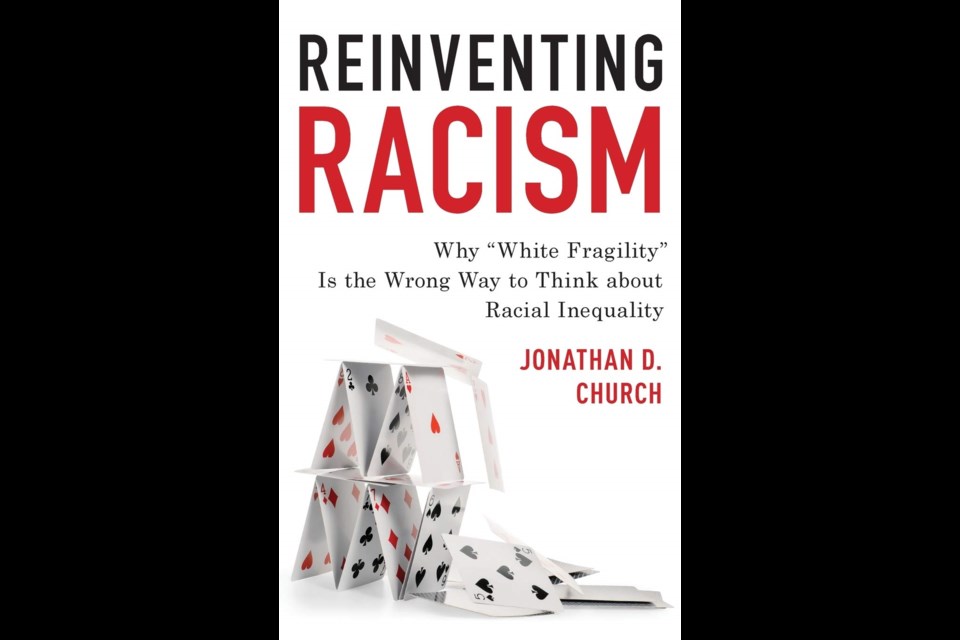Reinventing Racism – Why “White Fragility” Is the Wrong Way to Think about Racial Inequality
Jonathan D Church, Bowman & Littlefield, 239 pages
Racism is a global phenomenon which, unfortunately, will never be eradicated completely.
Although objective observations show that it is on the decline, we are still told on an almost daily basis by monomaniacally obsessive press and academics that racism is so deeply embedded in Western culture that it can never be extirpated. It has conveniently been defined in such a manner that only white people can be guilty of this behaviour.
One of the reasons for the persistent myths about racism is the influential book “White Fragility” by Robin DiAngelo.
According to DiAngelo, whites are socialized to “…a deeply internalized sense of superiority and entitlement” of which they are not even aware. This race-obsessed behaviour is supposedly so embedded that “…even a minimum amount of racial stress becomes intolerable, triggering a range of defensive maneuvers.”
DiAngelo describes the concept of white fragility as but one aspect of Whiteness, but in her hands it is more than that – it is a theory of Whiteness itself, of white privilege and racism in America, if not worldwide.
The economist Jonathan Church discusses DiAngelo’s theory in a well-researched, objective analysis. It is not a tirade by a far-right trogdolyte but a sober assessment of her thesis, leaning heavily on data and research which support his response – something I appreciate because Di Angelo has the irritating habit of making a statement and then moving on without even the slightest attempt at motivating the statement or – most importantly – supplying supportive data.
Church describes the Kafkaesque situation conjured up by DiAngelo: any attempt by a white person to defend him/herself against a charge of racism is ipso facto a manifestation of white fragility. There is no escape.
For me, the most insightful chapter is Church’s discussion of DiAngelo’s poor methodology which, in my opinion, is a major flaw in white fragility’s tottering edifice. DiAngelo in fact exhibits an almost allergic aversion to a scientific approach, for quantitative as well as qualitative data analysis, falsification and hypothesis testing and seems to make a conscious effort to bring facts into line with her narrative instead of the other way round. She also often comes across as preaching instead of writing actual academic literature, leaning as she does heavily on implicit bias, a concept which I shall not discuss here but which has been severely criticized in the past and itself rests on a rather unstable empirical foundation.
Critical Theory, and specifically Critical Race Theory, is discussed seventeen times by Church and he demonstrates clearly how she deviates from this theory in attempts to confirm her own theory of white fragility. Church himself appears rather neutral towards Critical Theory and while I disagree with him about that I do not find it a major bone of contention and it does not detract from the value of his book.
One of the consequences of DiAngelo’s theory (and others, eg intersectionality) is that people are reduced to mere members of a group and are simplistically judged as such, eg by skin color, ethnicity, sex or whatever, with little or no room for assessing individual characteristics – everything is the result of embedded or ingrained characteristics such as (perceived) racism or prejudice.
Viewpoints such as these are responsible for, among others, the concept of equity which attributes all and any differences in outcome (such as examination results or enrolment in STEM subjects) to the malignant influence of structural racism.
While DiAngelo’s theory appears rather tattered after Church’s analysis, it does not mean that he is wholly unsympathetic to what she has to tell, and rightly so: “(we) should not simply discard what DiAngelo is trying to say. She has undoubtedly observed common forms of resistance and reaction among the white people she has attempted to educate on racism over the years.”
Racism exists and it must be opposed, but it should be done without resorting to concepts like white fragility, micro-aggression and misuse of data. Wishful thinking won’t be of any help at all.
The views and opinions expressed in this article are those of the author, and do not necessarily reflect the position of this publication.




